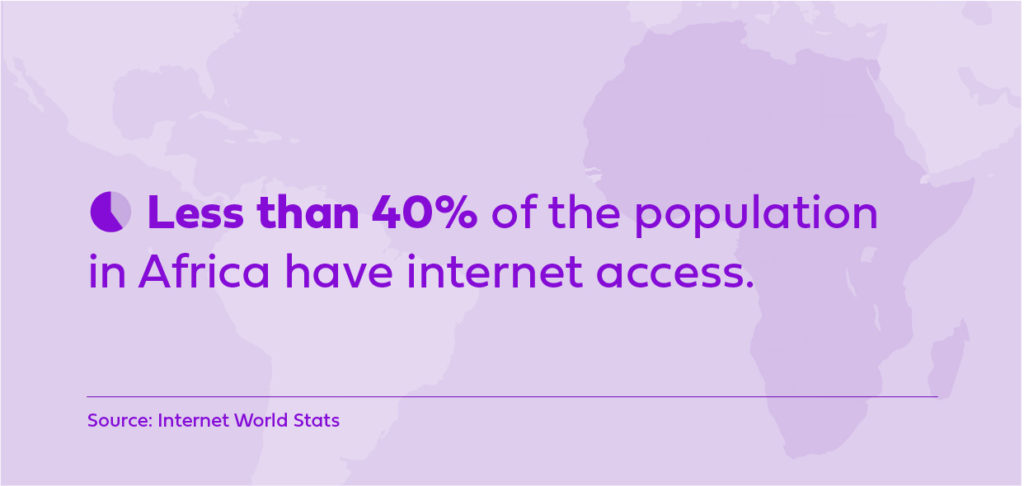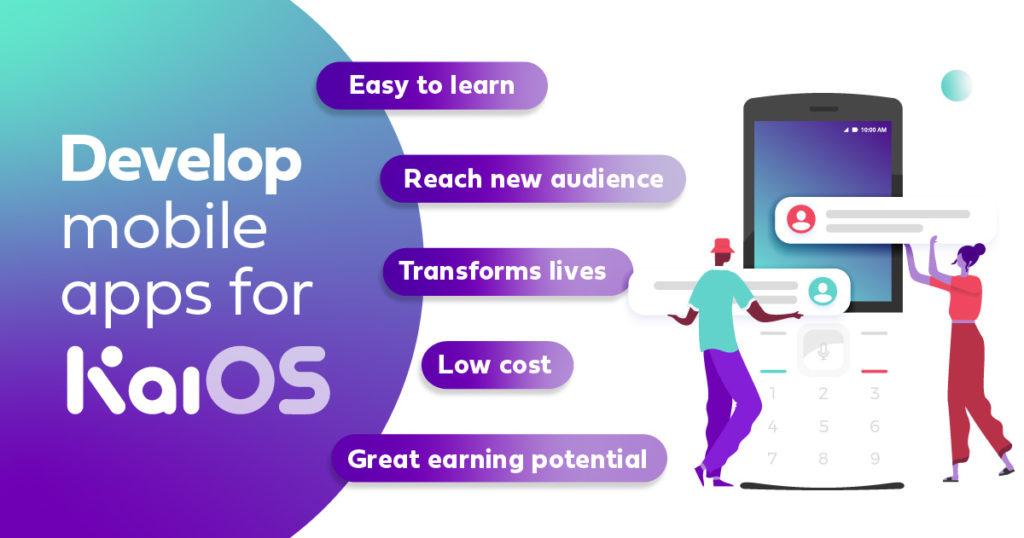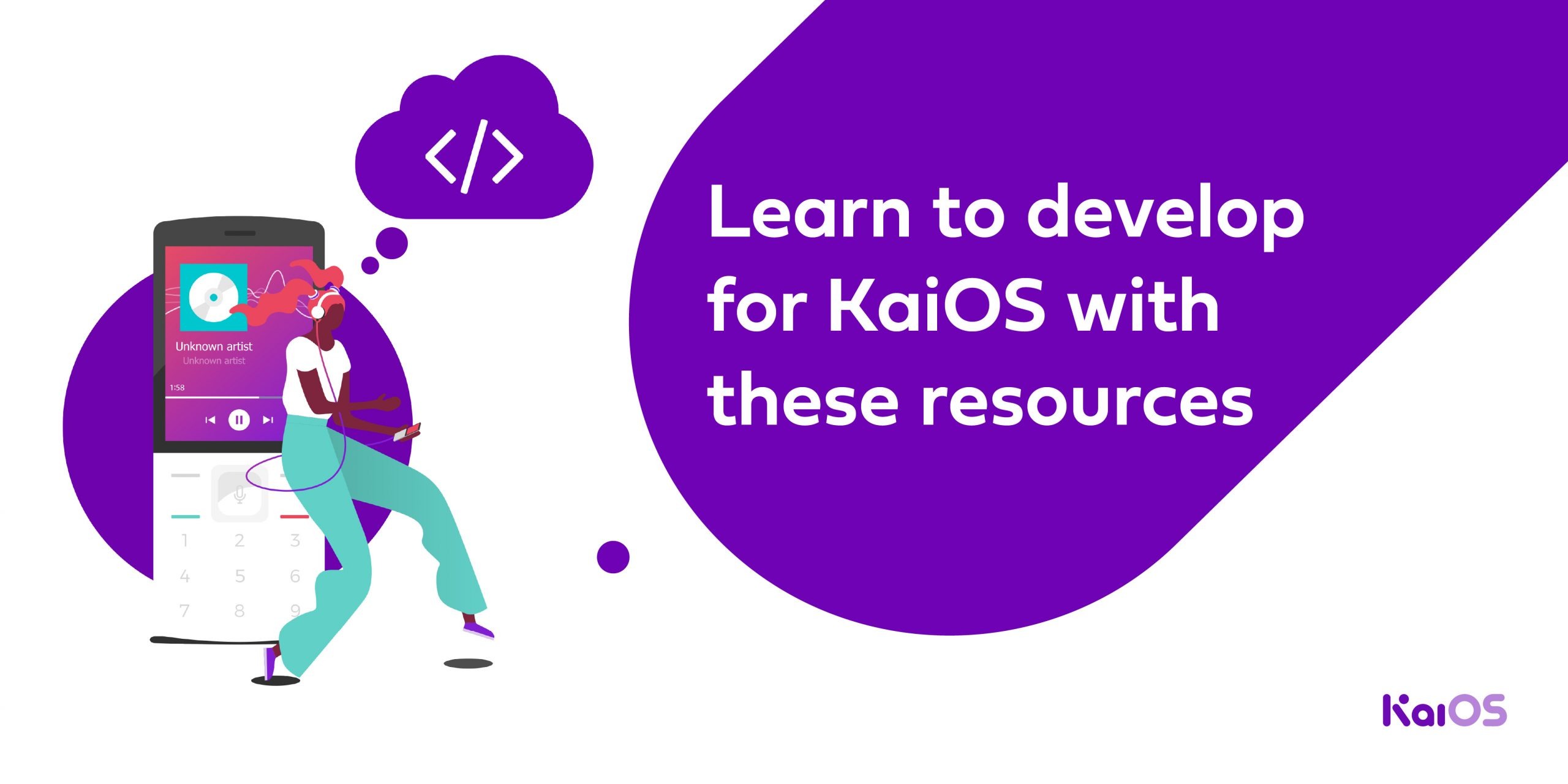KaiOS is now the third-largest mobile operating system, bringing internet access to underserved markets around the world. Our light operating system is designed for smart feature phones, which are affordable, non-touch devices that run web-based apps. With over 100 million smart feature phones currently running the KaiOS operating system worldwide, there is serious growth potential for web-based mobile development.
Not only are developers able to reach new geographical areas, but they can also design for new demographics. Recently connected consumers need and want apps that allow them to make the most of their smart feature phones. The opportunities for developers to create apps with these specific consumers in mind are boundless.
1. KaiOS opens untapped markets to developers

As KaiOS launches in emerging markets, mobile internet access will become accessible to billions of new consumers. Developers should be taking note of the massive number of people who are about to become connected for the first time:
- 55% of consumers in Latin America accessed the internet in 2017
- Many countries, such as Guatemala, Honduras, and Nicaragua, sit well below that point at 34%, 28.7%, and 30.2%, respectively.
- In the Middle East, 33% of consumers are still without internet.
- Less than 40% of the population in Africa have internet access
- 65% of the population in Southeast Asian countries like Laos and Myanmar remains unconnected.
Worldwide, people are beginning to show a preference for mobile versus broadband internet access. In 2018, mobile traffic accounted for 52.2% of all internet traffic, and in years prior, that percentage had been steadily rising. In fact, between 2013 and 2018, mobile internet usage rose by a staggering 222%.
The prevalence of touchscreen smartphones has certainly contributed to this upward trend, but the average smartphone costs $120, which keeps mobile internet access out of reach for billions of consumers around the world. Smart feature phones running KaiOS are solving that problem. With prices set as low as $17 per device, these phones provide an affordable way for previously unconnected consumers to access the internet.
Developers can now gain access to the billions of people in these previously untapped markets. Apps in the Google Play or the Apple App Stores are mostly inaccessible to these consumers because they’re only available on smartphones. Web-based apps released in the KaiStore, on the other hand, will be available to smart feature phone users who are eager to make the most of their devices.
2. KaiOS gives developers the opportunity to change lives

People in emerging markets are hungry for essential and relevant apps that help improve their education, excel in business, and manage their finances. Developers who design apps that cater to these underserved populations have the opportunity to significantly improve their quality of life.
Developers can contribute with apps that:
Enable mobile payments
In countries like Uganda, Tanzania, and Nigeria, a lack of confidence in banking systems causes many adults to avoid opening bank accounts. People without bank accounts generally rely on cash and mobile payment options. However, only 52% of the adult population in these areas has ever made or received a digital payment.
Now that these areas are becoming connected via smart feature phones, they are in need of mobile services that would allow them to send and receive payments digitally.
Create financial inclusion
The absence of mobile payment options is not the only financial problem people in emerging markets face. Many of these consumers lack access to resources that would help them improve their overall knowledge related to financial planning and management.
Empower women
Worldwide, the percentage of women accessing the internet is 12% lower compared with men. In low-and middle-income countries, the mobile internet access gender gap rises to 23%. Consequently, women have less financial autonomy and fewer educational resources.
When women get connected, they start online businesses, improve the health of their families, and drive economic growth. Mobile development can empower women when developers create apps that help women with career advancement, starting businesses, and managing health.
Give students access to educational resources
Apps that facilitate research and learning are particularly popular with and beneficial to children in emerging markets. After all, students with internet access are equipped with more educational resources and get better grades. Additionally, internet access helps children improve their language learning, research skills, and digital literacy.
Help consumers build digital skills
Lack of internet access results in low levels of digital literacy. Accordingly, newly connected consumers need help learning how to use search engines, video/photo software, email, and more. The KaiStore is an avenue that developers can use to provide materials that support the building of digital skills.
Clearly, mobile app development for KaiOS has the potential to transform daily life around the world. Developers now have a unique opportunity to provide meaningful resources for these previously unconnected consumers.
3. KaiOS gives developers the chance to stand out
Not only is web-based mobile development easier to learn, but developers in this space have less competition. As of the second quarter of 2019, the Google Play Store had approximately 2.5 million apps available, while the Apple App Store had almost 2 million. Apps released in the KaiStore will not be lost among these millions.
New developers can easily break into this market:
- KaiOS is easy to learn. Web-based mobile app development is uniquely accessible because it is less challenging to learn than native app development.
- Free resources are plentiful. With so many free resources to learn to develop for KaiOS, both new and experienced developers can easily create apps for the KaiStore.
- Real-life testing is inexpensive. Devices running KaiOS can be purchased for as low as $17, so developers have budget-friendly options for testing their apps directly on smart feature phones.
Have you already written web-based apps for the Google Play Store or Apple App Store? You can port your app into the KaiStore. There are no fees for porting existing apps, so experienced web-app developers don’t have to worry about cost getting in the way of entering the less competitive environment.
4. Mobile development for KaiOS is low-cost and has great earning potential

With benefits like free tools and KaiAds‘ revenue share, developers can take advantage of low start-up costs and promising monetization opportunities.
We want to make developing for KaiOS as accessible as possible, which is why we do not charge fees for developer account registration, app QA tools, app storage, or porting existing web apps to the KaiStore. Additionally, developers can start monetizing their apps right away through the KaiAds’ revenue share option.
Furthermore, the high visibility in the KaiStore means developers will not need to allocate as much money for user acquisition. Developers can focus on creating impactful apps and feel confident that consumers won’t have a hard time discovering them. New apps are shown at the top of the KaiStore, but Certified Developers (those who publish five or more apps) can continue to enjoy priority placement in app-store results.
Developers can join KaiOS’s mission to close the digital divide
By bringing innovative mobile development to emerging markets, we are providing valuable resources for previously unconnected people. Here are a few examples of impactful apps currently available in the KaiStore:
- Our Life app offers a variety of educational resources in categories like financial inclusion, digital literacy, health, education, agriculture, and women and children empowerment.
- Developer Valeriy Skachko’s apps — Period Tracker and Water Reminder — have put personal health management into the hands of many consumers around the world.
- Utilities apps like the U-Dictionary translation app and the Xender file-transfer app are enabling new and improving existing communication options.
Developers are quickly realizing that their work has the potential to transform lives. As a result, interest in designing mobile applications geared specifically toward these markets is growing.
We are excited to see what additional mobile app developers have to offer. Please join our mission to bring meaningful resources to mobile devices running KaiOS.
Ready to put your creative ideas to use by designing apps for KaiOS? Check out our developer portal to learn how to get started.

